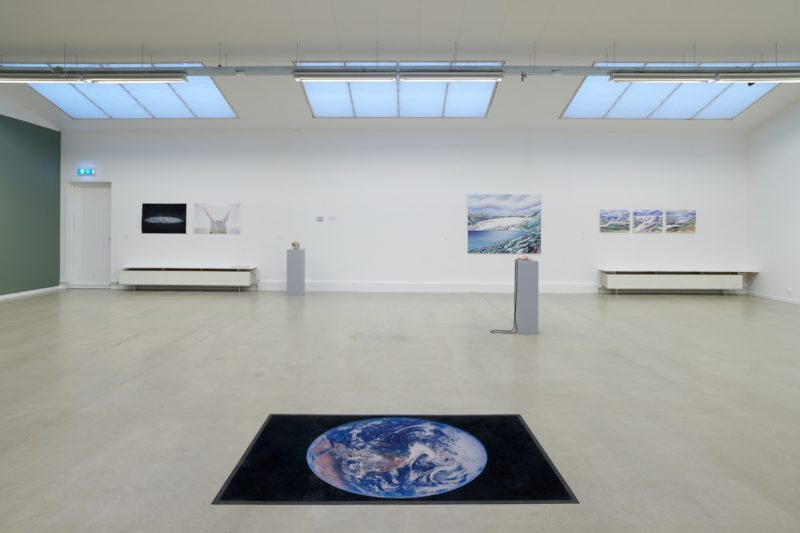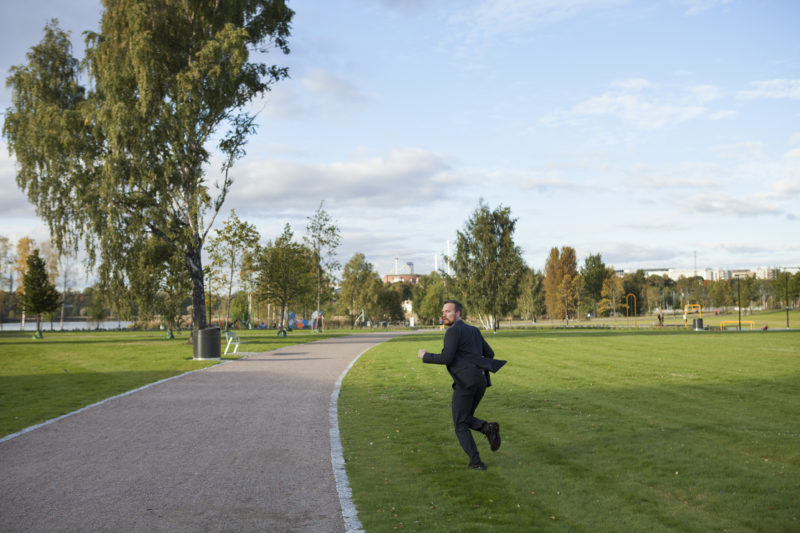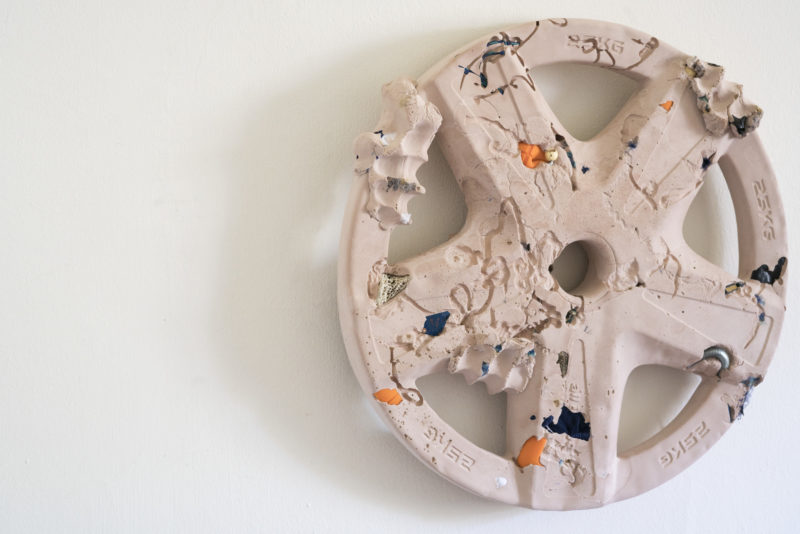28 Dec 2020
Interview
NESTORI SYRJÄLÄ: TRYING TO SAVE WHAT CAN BE SAVED
HIAP alumni Nestori Syrjälä has been a resident artist through HIAP’s residency exchange program on several occasions over the years.
Through HIAP’s collaboration with AECID, Ibero-American Institute of Finland, Embassy of Finland, Madrid, and Frame Visual Art Finland, Nestori participated in an exchange at Matadero Madrid, together with Spanish creators as well as Finnish artists Essi Kausalainen, Mikko Kuorinki and Jaakko Pallasvuo. The selected artists worked together first at Madrid, and later at HIAP at the El Ranchito Finland residency in Helsinki.
Nestori’s project at HIAP dealt with the anthropocene: a geological time defined by human activity, characterised by climate change and loss of biodiversity.
HIAP welcomed Nestori again in 2018, when Nestori worked at HIAP’s Suomenlinna studios in preparation for his participation at the Gwangju Biennale 2018.

Blue Marble Doormat, 2019.
AA: Your work over the years has explored issues of climate change and the loss of biodiversity. Do you have hope for the environment?
NS: Hope or not, there is no excuse for falling into any kind of comfortable catastrophism: it can be strangely soothing to think that capitalism, fossil fuels, or whatever are just these gigantic unstoppable destructive forces that will eventually turn everything to dust – and there is nothing for us to do but look from the sidelines and feel hopeless. As long as there are living creatures on the planet, you should do what you can and try to save what can be saved.
In my work I deal with these issues from an artistic perspective, which is not about designing ecological ways to live or anything like that. I work quite freely with whatever ideas come to mind. I would say these issues are more relevant for me in the way I work: how much I travel, what materials I use, how much work I produce etc.
AA: Contemporary society is causing much anxiety in people. Humans are lost amidst several crises: the environmental disaster, economic and political crises. What do you think would be an effective way of bringing about social change?
NS: Here in Finland, for example we need to bring our energy and resource consumption to about one fifth of what it is now. It is a daunting task. I can see no easy technical way to bring it about. Science or politician have a very bad track record and I doubt there is much hope there. Hopefully I am wrong. I think the transformation from fossil-fuelled consumerist society to some kind of post-fossil world will require a pretty radical re-evaluation of our current values. And probably much more. Through art you can explore radically different ways to see and do things. So maybe there is something we can do in the arts also, but if there is it will probably come as side product and not by producing ten thousand eco-themed biennials. Or maybe that is exactly the kind of madness that should be done. I really don’t know.

Running Man, 2016-17.
AA: Do artists have a responsibility to respond to the social and environmental issues that people are concerned about?
NS: Artists are free to work with whatever subject they choose. But everybody also has a responsibility to live and work in a way that does not destroy the conditions of life on the planet. So, even if you are making abstract sculptures you need to consider how you are doing it, what materials and how much energy you use in the process, how much are you travelling and by what means, how large studio you have and so on.
AA: What are you working on at the moment?
NS: Nowadays I am more and more interested in working in public space. The audience in public space is more diverse, there is real conflict and actually opposing views. It is more difficult but also more rewarding and relevant way to work at the moment. I’m currently working on a piece that will be show in Tarvaspää / Ainola / Visavuori – so in the context of Finnish national romantic art and these already dead, and from today’s perspective kind of problematic artists. Also I am developing a collaborative public art project for a housing complex in Stockholm. It is a try at making a public art in a new way: not by commission or competition, but by working directly with the architects and the housing association.

mammalbonetrashbagmultivitaminswimsuitlacieharddrivehouseduststeelboltpencilweightplate, 2020.
Photos provided by the artist.
Read more:
Events and exhibitions:
